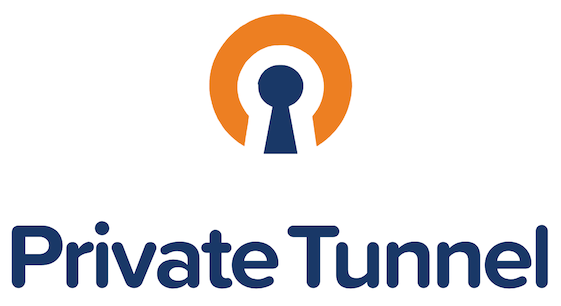Training your dog to come when called is an essential command that can help keep your furry friend safe and well-behaved. Whether you're at the park, in your backyard, or just want to ensure your dog's safety in any situation, teaching them to respond to your call is crucial. In this comprehensive guide, we'll walk you through the step-by-step process of training your dog to come when called. By the end of this article, you'll have the tools and knowledge needed to have a well-trained and obedient canine companion.
Why is it Important
Before diving into the training process, it's crucial to understand why teaching your dog to come when called is essential. This command can prevent accidents, ensure your dog's safety, and allow them more freedom during outdoor activities.
Starting with the Right Age
Puppies are like sponges when it comes to learning, so starting the training process early is advantageous. However, it's never too late to teach an older dog new tricks.
Patience is Key
Training a dog requires patience and consistency. Keep in mind that every dog learns at their own pace, so be prepared for some trial and error.
Training Techniques
Building Trust
The foundation of any successful training is trust. Establish a strong bond with your dog through positive interactions and rewards.
Using Positive Reinforcement
Reward-based training is highly effective. Use treats, praise, and affection to reinforce the desired behavior.
Start Indoors
Begin the training in a quiet and familiar indoor environment, free from distractions.
Teaching the "Come" Command
Introduce the command word, such as "come" or "here," and use it consistently.
Leash Training
Teach your dog to come while on a leash, ensuring their safety during walks.
Gradual Progression
Gradually increase the distance between you and your dog as they become more comfortable with the command.
Minimizing Distractions
As your dog becomes proficient indoors, start training in areas with more distractions.
Off-Leash Training
Once your dog is consistently responding on a leash, practice off-leash training in a safe, enclosed area.
Common Mistakes to Avoid
Punishment
Avoid punishing your dog for not responding promptly; it can create fear and hinder progress.
Inconsistency
Consistency is key to successful training. Ensure everyone in your household uses the same command and reward system.
Skipping Steps
Don't rush the training process. Skipping steps can lead to confusion for your dog.
Not Practicing Enough
Regular practice is essential to reinforce the "come" command. Make it a part of your daily routine.
Advanced Training Tips
Adding Distractions
Once your dog has mastered the command in familiar environments, gradually introduce controlled distractions. This can include other dogs, toys, or mild noises.
Recall Games
Engage your dog in recall games to make the training fun. Play hide-and-seek or have a family member call your dog while you hold them, then release them to go to the caller.
Consistent Body Language
Dogs pay close attention to body language. Ensure your body language is consistent when giving the "come" command, so there's no confusion.
Emergency Recall
Teach your dog an emergency recall command that overrides all distractions. This could save your dog's life in a dangerous situation.
Gradual Freedom
As your dog becomes more reliable with the "come" command, gradually grant them more freedom, allowing them to explore while maintaining control.
Troubleshooting
Refresher Training
Even after successful training, dogs may become less responsive over time. Periodically refresh their training to keep the command sharp.
Seek Professional Help
If you're facing difficulties in training your dog to come when called, consider consulting a professional dog trainer who specializes in obedience training.
Safety Precautions
Always Use a Leash
Until you're confident in your dog's recall abilities, always use a leash when in unsecured areas to prevent them from running off.
Practice in Different Settings
Train your dog in various environments, such as parks, beaches, and crowded places, to ensure they respond to your command everywhere.
Advanced Training Exercises
Distance Recall
Once your dog is comfortable with close-range recalls, gradually increase the distance between you and your dog. This exercise builds their confidence and responsiveness over longer distances.
Proofing Against Distractions
Expose your dog to various distractions, such as other animals or people. Practice the recall command in these situations to reinforce their obedience.
Variable Rewards
Vary the rewards your dog receives for coming when called. Sometimes offer treats, while other times provide affection or playtime. This keeps the training exciting and unpredictable for your dog.
Practice in Different Weather Conditions
Dogs can be sensitive to weather changes, so practice recalls in different weather conditions to ensure they respond reliably, rain or shine.
Incorporate Verbal Cues
Incorporate verbal cues into your training routine. For example, you can say "come" while clapping your hands or using a specific tone of voice to make the command more distinct.
Maintaining Consistency
Involve Family Members
Ensure that everyone in your household is on the same page when it comes to training commands and techniques. Consistency among family members is crucial for your dog's understanding.
Regular Check-Ins
Even after your dog has mastered the recall command, continue to check in with occasional recalls during walks and playtime to reinforce their obedience.
Celebrate Successes
Graduation Celebration
Once your dog consistently responds to the "come" command in various settings, celebrate their achievement with a special outing or a favorite treat.
Troubleshooting Continued
Overcoming Fear
If your dog displays fear or anxiety during training, consult a professional trainer or behaviorist to address and overcome these issues.
Persistent Disobedience
If your dog consistently disobeys the recall command, consider seeking professional help to identify and address underlying behavioral problems.
Safety First
Maintain Control
Remember that the "come" command is not just about your dog's safety but also about maintaining control in unpredictable situations.
Training your dog to come when called is an ongoing process that requires patience, consistency, and dedication. Remember that every dog is unique, and progress may vary. However, with the right techniques and a strong bond, you can have a well-trained dog that responds promptly to your command, ensuring their safety and your peace of mind.
Training your dog to come when called is a rewarding journey that enhances your relationship with your four-legged companion. By following these steps and being patient and consistent, you can have a well-trained dog that responds promptly to your command, keeping them safe and allowing them to enjoy more freedom.
FAQs
11. What if my dog doesn't like treats or food rewards?
If your dog isn't motivated by food, try using toys, praise, or a favorite game as a reward during training.
12. Can I use an electronic collar for training?
Electronic collars should be used cautiously and under the guidance of a professional trainer. Positive reinforcement methods are typically more effective and humane.
13. Is it possible to train my dog without treats?
Yes, you can train your dog without treats, but it might require more patience and creativity to find other forms of motivation.
14. My dog is stubborn. What can I do?
Stubbornness in dogs can often be a sign of their need for consistent training and clearer communication. Consult a professional trainer for guidance.
15. Can I train my dog to come when called if they have a history of running away?
Yes, it's possible to train even a dog with a history of running away. Start in a secure area and gradually increase the challenges as they progress.










 English (US) ·
English (US) ·